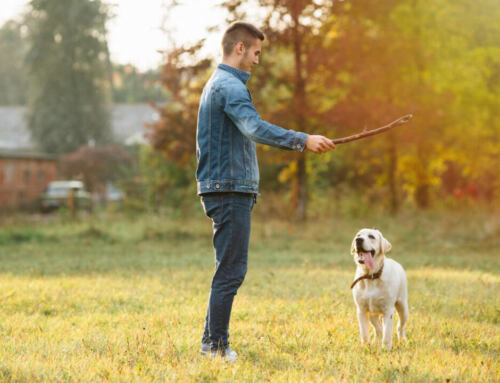Pet owners often go out with their dogs for vacations or long walks in summer. Pools, parks, and cookouts have become the favorite hotspots. But is it alright to expose your dog to heat? As a pet parent, you must ponder this because it directly connects with your furry friend’s well-being. They may not speak, but their agitation and discomfort can have clues. And there can be severe potential health consequences, too. Some dogs pant a lot in the sun. They do this to produce a cooling effect through the air that travels to their saliva and nasal mucus. The blood vessels in the feet, ears, and face also help dispel heat from the body.
Signs of heat-induced health risks in dogs
Can dogs handle hot weather Can dogs handle hot weather? This question bothers many caring pet lovers and makes them find the correct answer so they can protect their furry friends. For the unaware, overheating can exhaust your pet and make it difficult for them to cool down through natural methods like panting. They don’t sweat like humans. The issue of overheating is apparent if your pup’s body temperature is higher than 104°F. The average temperature will be 101.5°F. Such cases are noticeable if there is a lack of hydration and shade and overexposure to heat. Telltales will be excess drooling, panting, dry gums, thirstiness, etc. Nausea, imbalance, risk of collapsing, and increased heartbeat can also exist.
Ways To Keep A Dog Safe In The Summer Heat
As you must have noticed, the reasons for overheating are similar to humans. Take your little friend to a covered or cooler place for safety. If there is a fan, switch it on. You can also spray a cool mist or give a sponge. Take care of their paws, especially. Make it drink enough water. It will be a great addition to their water bowl if you can arrange ice cubes. Nowadays, you also get cooling mats for dogs. These can also relieve your dog’s discomfort. At the same time, avoid keeping your dog in a locked car in the parking area. The car can become hot and affect your dog’s health tremendously. Track their body temperature and humidity levels. Also, avoid any exercises that make their body warm in the summer.
Some people don’t know their pet’s age. You can take your dog to a vet for assessment. It’s a must if your furry friend is senior. The doctor will check the condition of their teeth and gums to analyze their age. After all, old dogs can be more vulnerable to heat strokes and other fatal conditions.
The innocent pet depends on you for its safety and security. You know it enjoys certain things, such as walking and playing. However, it’s also advisable to understand the impact of environmental influences on their health. Since hot weather or direct exposure to sunlight can affect them badly, practicing care is necessary. Carry the essentials if you plan to stay outdoors all day long with your doggy. Know its symptoms that demonstrate an unusual pattern. When you are on your guard, your dog will be safe. You can provide the best environment for your furry friend to enjoy its time.
Understanding How Dogs Handle Hot Weather
Unlike humans who cool themselves through sweat, dogs rely on panting and releasing heat through their paw pads and nose. This makes temperature regulation much more challenging. Dogs are also at higher risk of overheating thanks to their thick fur coats acting as insulation.
Factors impacting how well dogs handle hot weather include age, breed, weight, and health status. For example, very young and senior dogs have difficulty regulating their body temperature. Brachycephalic breeds like pugs along with dogs with thick coats struggle in the heat. Overweight and obese dogs also have higher internal heat production. Finally, dogs with heart disease and other health issues are at greater risk.
Recognizing the Signs of Heat Exhaustion
Pay close attention to your dog on hot days to catch any initial signs of heat exhaustion like:
- Heavy panting
- Bright red gums
- Increased drooling
- Wobbliness and weakness
- Rapid pulse
As heat exhaustion progresses to heatstroke, symptoms escalate to include vomiting, diarrhea, mental dullness or loss of consciousness, and even seizures. Get immediate emergency veterinary treatment if you observe these critical signs.
Preventing Overheating with Safety Precautions
Keep your pup safe in hot weather by following these simple guidelines:
- Provide ample shade and fresh water when outside
- Walk early morning or evening when it’s cooler
- Avoid prolonged exercise in heat and humidity
- Never leave your dog confined in a hot car
- Ensure proper grooming with summer haircuts
Additionally, watch red flag warnings for dangerously hot days. Avoid going out midday when temperatures peak, and opt for indoor play sessions instead. Consider purchasing cooling accessories like mats, vests and bandanas as well.
Treating Early Stages of Heat Exhaustion
If your dog exhibits mild signs of overheating, spring into action by:
- Moving them into shade/cool space
- Offering cool water; hydrate gently
- Applying cool, wet towels to their body
- Directing a fan to blow on them
Also contact your vet, as supplementary electrolytes or other supportive measures may be warranted. Closely monitor them even after signs dissipate. Treatment early on can prevent escalation to dire heatstroke.
Understanding Hot Weather’s Serious Risks
As the weather heats up, it’s crucial to modify activities to keep your dog safe. Watch closely for early signals of heat intolerance, and take prompt action if needed. With extra awareness and care, you and your pup can still relish the sunny days ahead. Stay cool!




